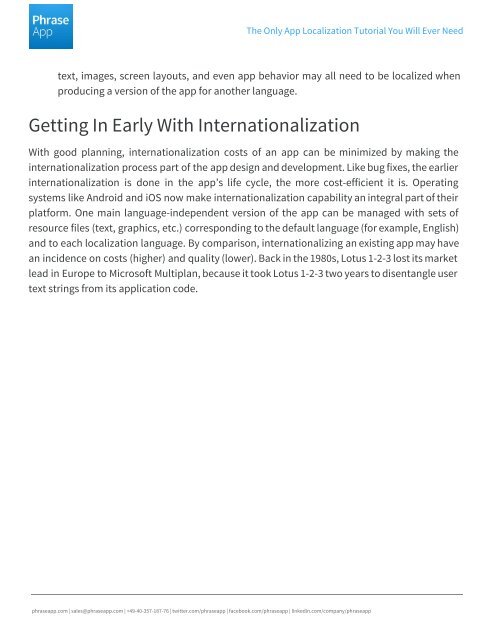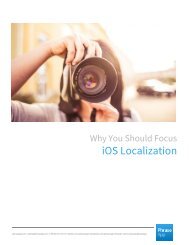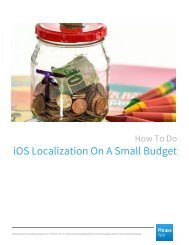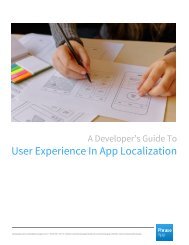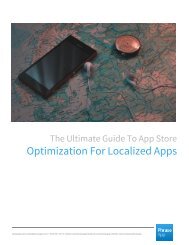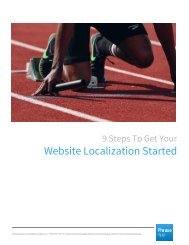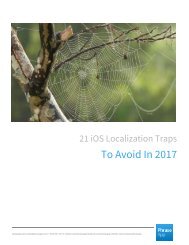The Only App Localization Tutorial You Will Ever Need
You also want an ePaper? Increase the reach of your titles
YUMPU automatically turns print PDFs into web optimized ePapers that Google loves.
<strong>The</strong> <strong>Only</strong> <strong>App</strong> <strong>Localization</strong> <strong>Tutorial</strong> <strong>You</strong> <strong>Will</strong> <strong>Ever</strong> <strong>Need</strong><br />
text, images, screen layouts, and even app behavior may all need to be localized when<br />
producing a version of the app for another language.<br />
Getting In Early With Internationalization<br />
With good planning, internationalization costs of an app can be minimized by making the<br />
internationalization process part of the app design and development. Like bug fixes, the earlier<br />
internationalization is done in the app’s life cycle, the more cost-efficient it is. Operating<br />
systems like Android and iOS now make internationalization capability an integral part of their<br />
platform. One main language-independent version of the app can be managed with sets of<br />
resource files (text, graphics, etc.) corresponding to the default language (for example, English)<br />
and to each localization language. By comparison, internationalizing an existing app may have<br />
an incidence on costs (higher) and quality (lower). Back in the 1980s, Lotus 1-2-3 lost its market<br />
lead in Europe to Microsoft Multiplan, because it took Lotus 1-2-3 two years to disentangle user<br />
text strings from its application code.<br />
phraseapp.com | sales@phraseapp.com | +49-40-357-187-76 | twitter.com/phraseapp | facebook.com/phraseapp | linkedin.com/company/phraseapp


